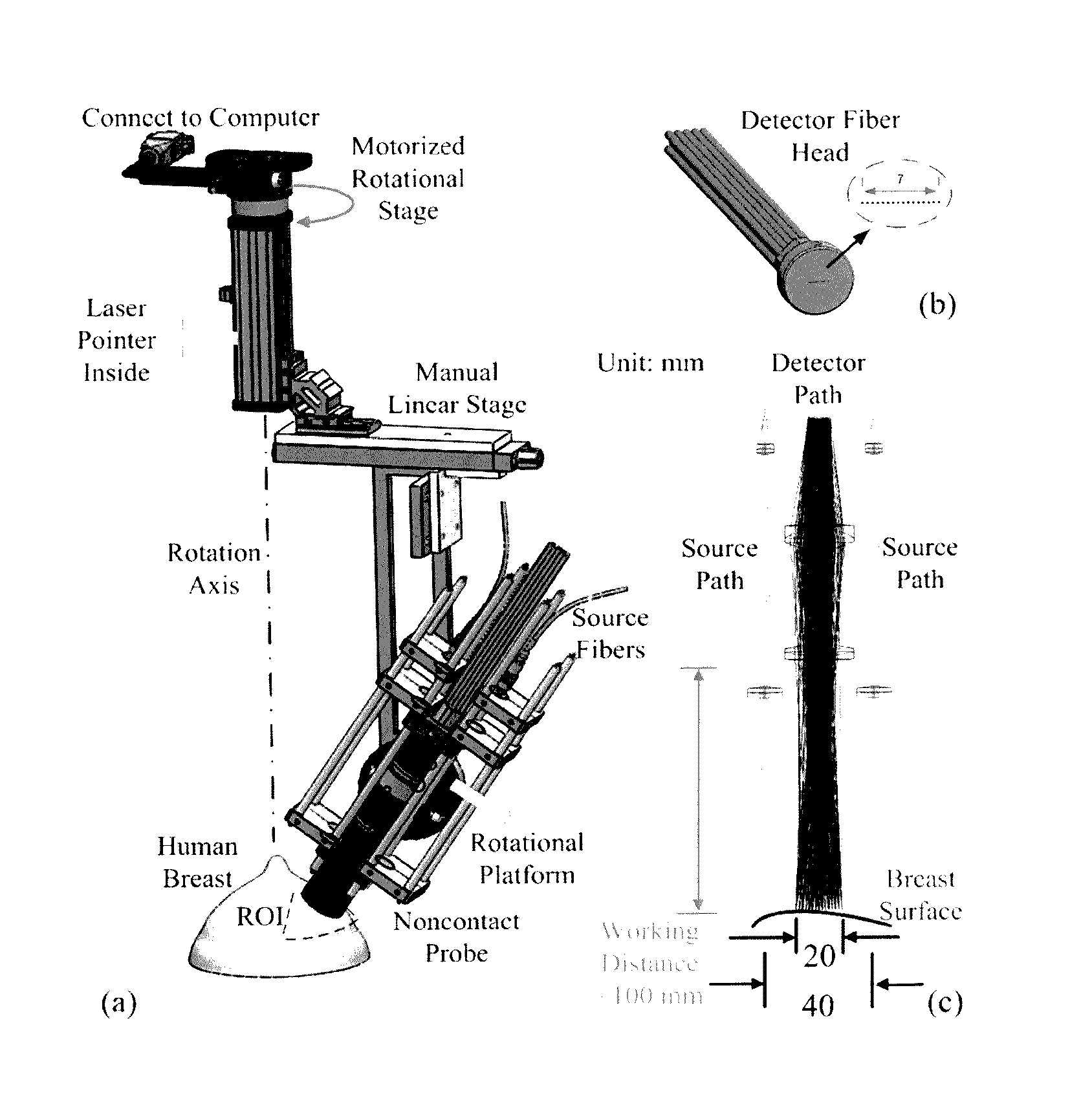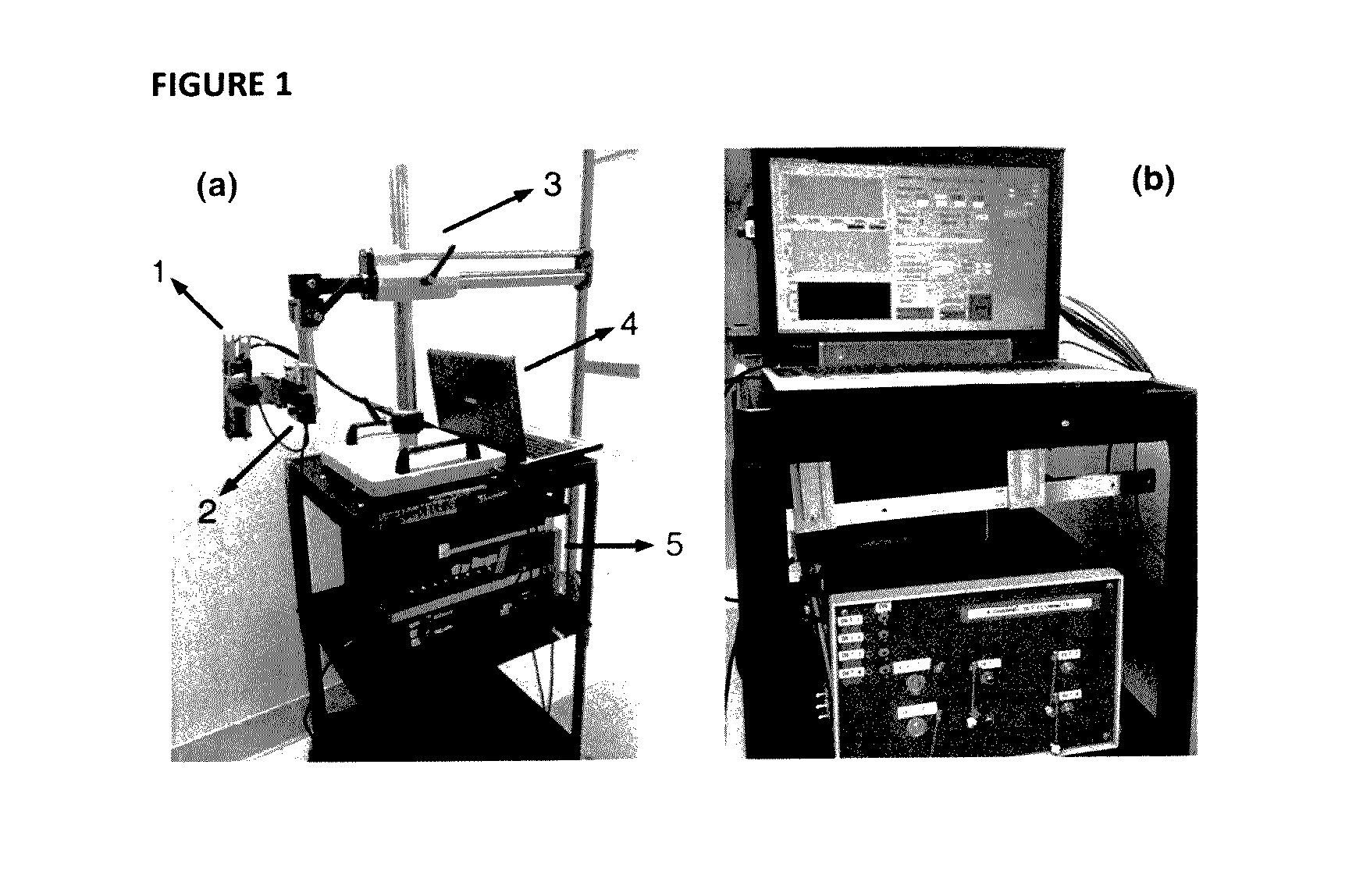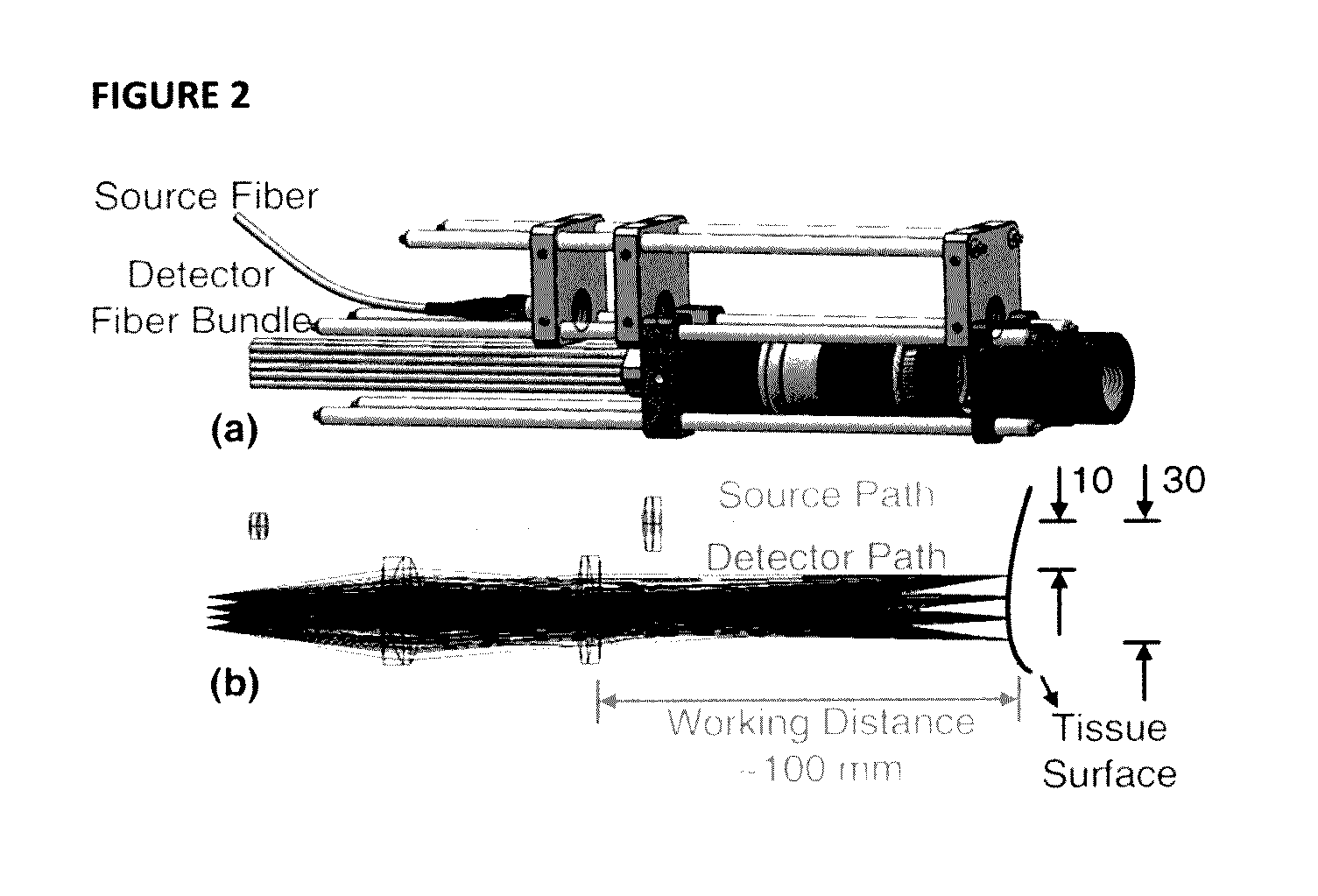Noncontact Three-dimensional Diffuse Optical Imaging of Deep Tissue Blood Flow Distribution
a diffuse optical imaging and deep tissue technology, applied in the field of diffuse correlation tomography, can solve problems such as the risk of infection of vulnerable tissues, the failure of successful execution of diagnostics, and the inability to accurately detect the presence of infection in the blood stream of the deep tissue,
- Summary
- Abstract
- Description
- Claims
- Application Information
AI Technical Summary
Benefits of technology
Problems solved by technology
Method used
Image
Examples
examples
EX. 1: Noncontact Diffuse Optical Assessment of Blood Flow Changes in Head and Neck Free Tissue Transfer Flaps
[0094]The custom-made ncDCS system for the noncontact measurement of tissue blood flow is shown in FIG. 1. A noncontact optical probe is held by a platform connected to a linear motorized stage. A multiple axis stand holder provides free movements to adjust the location and incident angle of the probe. A DCS flowmetry is controlled by a laptop for continuous monitoring of tissue blood flow as soon as the noncontact probe is aligned over the target tissue. The four-channel DCS device consists of a long-coherence-length (>5 m) NIR laser diode (785 nm, 100 mW, CrystaLaser Inc, California), four single-photon-counting avalanche photodiodes (APDs, Perkin Elmer, Canada), and a four-channel correlator (correlator.com, New Jersey). The ncDCS system is integrated compactly and portably to ensure convenient operation in both operating and patient rooms.
[0095]FIG. 2(a) shows the detail...
PUM
 Login to View More
Login to View More Abstract
Description
Claims
Application Information
 Login to View More
Login to View More - R&D
- Intellectual Property
- Life Sciences
- Materials
- Tech Scout
- Unparalleled Data Quality
- Higher Quality Content
- 60% Fewer Hallucinations
Browse by: Latest US Patents, China's latest patents, Technical Efficacy Thesaurus, Application Domain, Technology Topic, Popular Technical Reports.
© 2025 PatSnap. All rights reserved.Legal|Privacy policy|Modern Slavery Act Transparency Statement|Sitemap|About US| Contact US: help@patsnap.com



